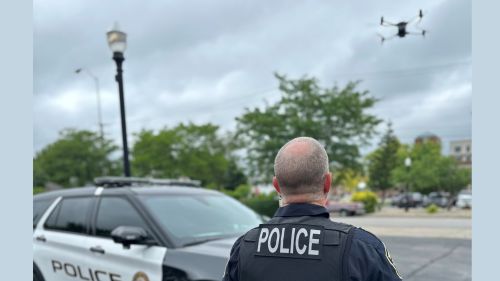The recent “Operation Spiderweb” drone strike by Ukraine on Russian airbases illustrated starkly how inexpensive drone technology can evade sophisticated air defenses and inflict massive damage. While we rightly focus on international implications, we must not overlook a critical reality: similar drone technology poses a clear and growing threat domestically, especially to soft targets under local law enforcement protection.
Yet, despite this awareness of the danger, most local law enforcement agencies are ill-prepared and under-equipped to counter drone threats. To move from recognition to readiness, local law enforcement needs a clear and actionable roadmap. Here’s how local police can and must prepare.
Policy development and strategic planning
Effective response begins with clear policy. Departments must draft comprehensive counter-UAS policies, addressing the scope of threats, detection procedures, response guidelines and multi-agency coordination. Policies should cover public event security, critical infrastructure protection and drone incident response.
Regional collaboration amplifies effectiveness. Local agencies should partner with neighboring jurisdictions and state fusion centers or regional real-time crime centers (RTCCs). Joint exercises and coordinated threat assessments ensure agencies understand their role and capabilities during drone incidents.
Conducting multi-agency drone threat drills would help develop clearer response protocols and identify communication gaps. This type of proactive planning should become standard.
Investing in essential detection and response technologies
Identifying drone threats early is key. Some primary categories of detection technology include:
- Radar systems: Ground-based radar systems can be effective at detecting drone signatures at longer distances and higher altitudes.
- Radio frequency (RF) sensors: These sensors identify the communication signals between a drone and its operator, pinpointing the operator’s location.
- Visual and thermal cameras: Cameras complement radar and RF sensors, enabling visual confirmation and tracking of drones, especially crucial at night or in poor visibility.
- Acoustic sensors: These sensors detect the unique acoustic signatures of drone motors and propellers, providing additional detection capability, particularly in quiet or urban environments.
Initial investments do not need to be prohibitively expensive. Modular or mobile detection setups, which can be deployed temporarily for major events or potential threat scenarios, offer cost-effective starting points for small to medium-sized departments.
Federal and state funding opportunities
Accessing available funding is critical. Several existing federal programs explicitly fund local preparedness against emerging threats:
- DHS State Homeland Security Program (SHSP) and Urban Area Security Initiative (UASI) grants directly support capabilities to enhance security and could be used counter drone threats.
- FEMA Preparedness Grants and the DOJ Edward Byrne Memorial Justice Assistance Grant (JAG)program could be leveraged to acquire detection and response technologies.
Police departments should collaborate closely with their state homeland security agencies to apply effectively for these grants. Demonstrating regional collaboration, policy readiness, and clearly defined technology plans significantly strengthens grant proposals.
Legal and regulatory clarity
Currently, local police agencies operate in a legal gray zone regarding drone mitigation measures. Federal law restricts some proactive measures, such as electronic jamming or kinetic interdiction, without special federal authorization. To empower local agencies, Congress and state legislatures must act swiftly:
- Clearly define permissible counter-UAS tactics for local law enforcement.
- Establish streamlined federal approval processes for critical response methods like jamming or drone interdiction under defined threat scenarios.
- Facilitate information sharing and coordination between local, state and federal entities regarding drone incidents and responses.
With clear legal frameworks, agencies can confidently train and prepare for potential drone attacks without hesitation or ambiguity.
Training and collaboration
Equally crucial is robust training. Federal entities like FEMA, DHS and the FBI already have specialized experience and/or training programs addressing drone threats. Local departments must leverage this and actively seek and participate in these courses. Scenario-based training, tabletop exercises, and real-time simulations are essential to building a robust detect and response capability.
Agencies should also establish routine collaboration with federal partners, enhancing intelligence sharing and coordination. For example, regional drone threat task forces can ensure consistent knowledge-sharing and operational alignment among multiple law enforcement layers.
Time to act is now
Operation Spiderweb was not just an international incident — it was a clear indication of an evolving, accessible threat that local police must urgently address. By swiftly developing comprehensive policies, investing in key detection technologies, aggressively pursuing federal and state funding, clarifying legal authorities, and prioritizing specialized training, local law enforcement can effectively start protecting communities from drone threats.
We cannot afford to wait for tragedy to accelerate our preparedness. If we do not prepare, this emerging threat will come without warning. Our readiness will determine whether we prevent tragedy or become victims of it.









